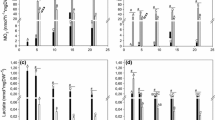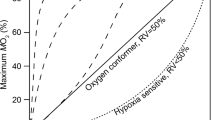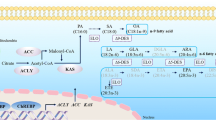Abstract
The respiratory physiology of summer diapausing eggs of the neustonic copepodAnomalocera patersoni, maintained under constant temperature (13 °C) and light (12 h light:12 h dark) conditions, was characterized by a bell-shaped curve, with low O2 uptake levels at the beginning of dormancy. This was followed by a steady rise in O2 consumption with maximum levels of 0.002 μl O2 embryo−1 h−1 70 d after spawning. A slow diminution in O2 uptake then occurred until Day 150 when minimum values of 0.0003 μl O2 embryo−1 h−1 were recorded, coinciding with the hatching of the first embryos. Embryos continued to hatch asynchronously up to 360 d from the moment of egg laying. When eggs were subjected to 20 °C, the respiratory activity was almost three times higher than at 13 °C, even though both respiratory curves were similar. The elevated metabolism in eggs kept at 20 °C led to death of the embryos possibly due to a total depletion of metabolic reserves. ATP content also differed at the two temperatures. Diapause eggs kept at 20 °C showed no rapid rise in ATP content as opposed to those kept at 13 °C. The results of temperature shock experiments, in which eggs were first kept at winter temperatures for several weeks, after which the temperature was raised to 20 °C for another number of weeks prior to a second period of chilling at 13 °C, showed that as long as embryos were kept at 20 °C no hatching occurred. By contrast, hatching was observed after 10 d following the resumption of winter temperatures, suggesting that low environmental temperatures are an essential prerequisite for hatching of these eggs. The type of diapause inA. patersoni differs considerably from the one described in insects and in another neustonic copepod,Pontella mediterrana. In this case, there is a U-shaped respiratory curve with greatest O2 consumption prior to the onset or upon breaking of diapause. Differences in the two types of diapause seem to involve not only differences in O2 consumption levels but also in the sequence of metabolic changes with time and the metabolic requirements during sommer and winter dormancy.
Similar content being viewed by others
References
Andrewartha HG (1952) Diapause in relation to the ecology of insects. Biol Rev 27: 50–107
Braune HJ (1976) Effects of temperature on the rates of oxygen consumption during morphogenesis and diapause in the egg stage of Leptopterna dolobrata (Heteroptera, Miridae). Oecologia 25: 77–87
Clegg JS, Cavagnaro J (1975) Interrelationship between water and metabolism inArtemia cysts IV — ATP and cyst hydration. J cell Physiol 88: 153–166
Clegg JS, Conte FP (1980) A review of the cellular and developmental biology ofArtema. In: Persoone G, Sorgeloos P, Roels O, Jaspers E (eds) The brine shrimpArtemia. Vol. 2. Physiology, biochemistry, molecular biology. Universa Press, Wetteren, Belgium, pp 11–54
Grice GD, Marcus NH (1981) Dormant eggs of marine copepods. Oceanogr mar Biol A Rev 19: 125–140
Hairston Jr NG, De Stasio Jr BT (1988) Rate of evolution slowed by a dormant propagule pool. Nature 336: 239–242
Hairston Jr NG, Van Brunt RA (1994) Diapause dynamics of two diaptomid copepod species in a large lake. Hydrobiologia 292/293: 209 -218
Hand SC, Gnaiger E (1988) Anaerobic dormancy quantified in Artemia embryos: a calorimetric test of the control mechanism. Science 239: 1425–1427
Ianora A, Santella L (1991) Diapause embryos in the neustonic copepodAnomalocera patersoni. Mar Biol 108: 387–394
Mansingh A (1971) Physiological classification of dormancies in insects. Can Ent 103: 983–1009
Marcus NH (1979) On the population biology and nature of diapause ofLabidocera aestiva (Copepoda: Calanoida). Biol Bull mar biol Lab, Woods Hole 157: 297–305
Marcus NH (1980) Photoperiodic control of diapause in the marine calanoid copepodLabidocera aestiva. Biol Bull mar biol Lab, Woods Hole 159: 311–318
Marcus NH (1982a) The reversibility of subitaneous and diapause egg production by individual females ofLabidocera aestiva (Copepoda, Calanoida). Biol Bull mar biol Lab, Woods Hole 162: 3944
Marcus NH (1982b) Photoperiodic and temperature regulation of diapause inLabidocera aestiva. Biol Bull mar biol Lab, Woods Hole 162: 45–52
Marcus NH (1984) Variation in the diapause response ofLabidocera aestiva (Copepoda, Calanoida) from different latitudes and its importance in the evolutionary process. Biol Bull mar biol Lab, Woods Hole 166: 127–139
Marcus NH (1986) Population dynamics of marine copepods: the importance of photoperiodism. Am Zool 26: 469–477
Marcus NH, Lutz R, Burnett W, Cable P (1994) Age, viability and vertical distribution of zooplankton resting eggs from an anoxie basin: evidence of an egg bank. Limnol Oceanogr 39: 154–158
Paterson GP (1977) A simplification of the protein assay method of Lowry et al. which is more generally applicable. Analyt Biochem 83: 346–356
Rakshpal R (1962) Respiratory metabolism during embryogenesis of a diapause species of field cricket,Gryllus pennsylvanicus Burmeister (Ortoptera, Gryllidae). J Ins Physiol 8: 217–221
Roemhild G (1965) Respiration of the eggs and part of eggs ofAulocara elliotti. Physiol Zool 38: 213–218
Romano G, Ianora A, Santella L, Miralto A (1996) Respiratory metabolism during embryonic subitaneous and diapause development inPontella mediterranea (Crustacea, Copepoda). J comp Physiol (Sect B) 166: 157–163
Santella L, Ianora A (1990) Subitaneous and diapause eggs in Mediterranean populations ofPontella mediterranea (Copepoda, Calanoida). Mar Biol 105: 83–90
Santella L, Ianora A (1992) Fertilization envelope in diapause eggs ofPontella mediterranea. Molec Reprod Dev 33: 463–469
Stross RG, Hill JC (1968) Photoperiod control of winter diapause in the freshwater crustacean,Daphnia. Biol Bull mar biol Lab, Woods Hole 134: 176–198
Van der Linden A, Blust R, Van Laere AJ, Decleir W (1988) Light-induced release of Artemia dried embryos from diapause: analysis of metabolic status. J exp Zool 247: 131–138
Watson NHF, Smallman BN (1971) The physiology of diapause inDiacyclops navus Herrick (Crustacea, Copepoda). Can J Zool 49: 1449–1454
Author information
Authors and Affiliations
Additional information
Communicated by M. Sara, Genova
Rights and permissions
About this article
Cite this article
Romano, G., Ianora, A. & Miralto, A. Respiratory physiology in summer diapause embryos of the neustonic copepodAnomalocera patersoni . Mar. Biol. 127, 229–234 (1996). https://doi.org/10.1007/BF00942107
Received:
Accepted:
Issue Date:
DOI: https://doi.org/10.1007/BF00942107




